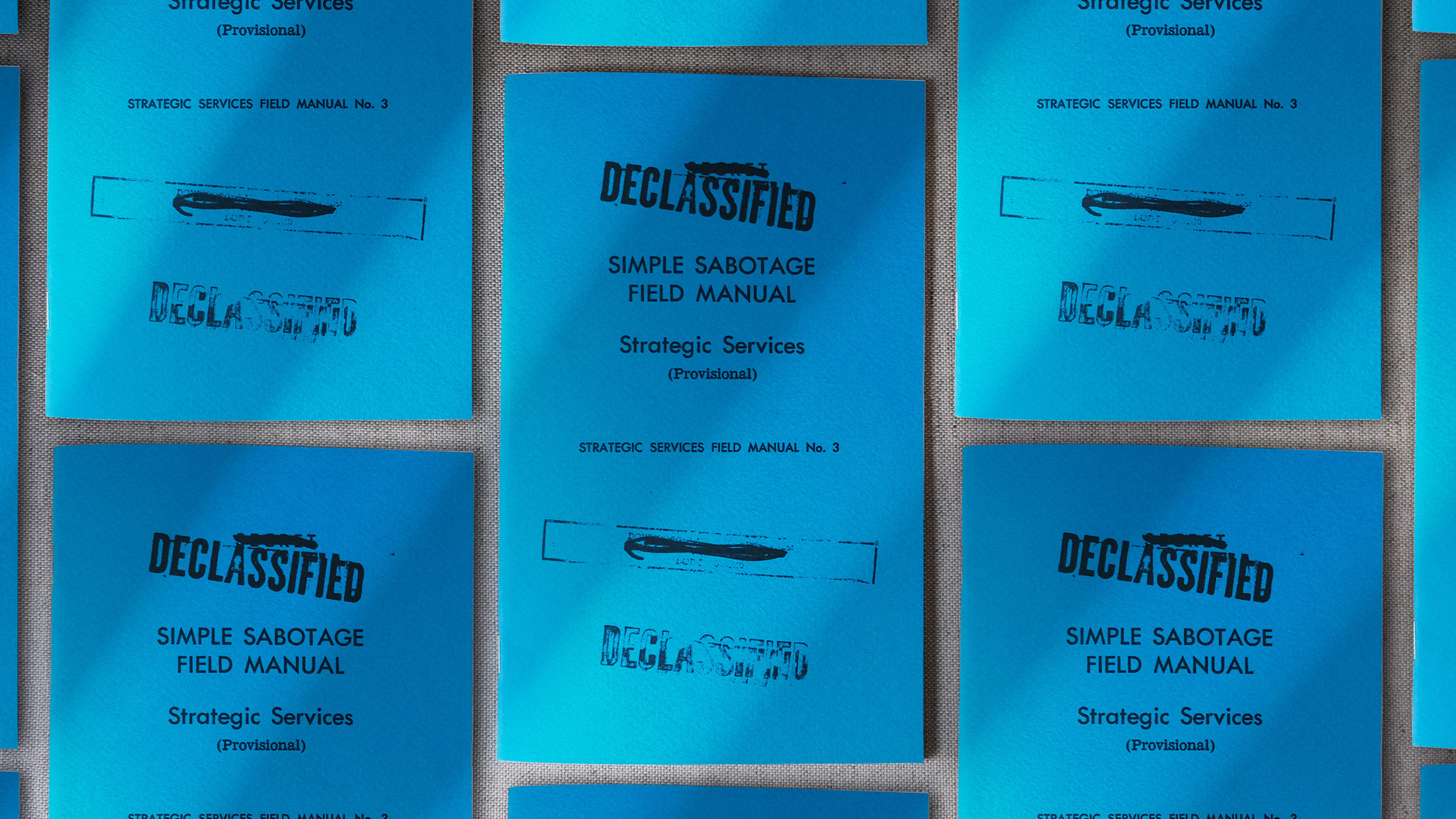We recently found a copy of a 1944 Simple Sabotage Field Guide inside the unlocked desk drawer of one of our unpaid interns. It appears they were applying techniques from the pamphlet to their job at the Department. These included tactics such as “bringing up irrelevant issues as frequently as possible,” “misfiling essential documents,” and “spreading disturbing rumors”, and “acting stupid”.
We recognized these sabotage techniques as threats to productivity, so in an effort to raise awareness of their dangers, we decided to reprint copies for distribution and share more information about the pamphlet here.

Simple Sabotage Field Manual was written by the Office of Strategic Services (OSS), a no-longer-existing precursor to the Central Intelligence Agency, in 1944. It was declassified by the CIA in 2008.

The instructions were originally intended for “citizen-saboteurs” living in German-occupied territories in Europe to slow down and disrupt the enemy during wartime. The first half of the book contains much of what you’d expect from a WWII-era sabotage guide—plenty of talk about starting fires in “warehouses, barracks, offices, hotels, and factory buildings.”
But sprinkled throughout, especially toward the end, are surprisingly timeless techniques that could still apply to modern office jobs. We definitely do not recommend trying any of them.

Some of our least favorite, most irritating techniques were:
“When possible, refer all matters to committees, for ‘further study and consideration.’ Attempt to make the committee as large as possible — never less than five.”
“Do your work poorly and blame it on bad tools, machinery, or equipment. Complain that these things are preventing you from doing your job right.”
“If possible, join or help organize a group for presenting employee problems to the management. See that the procedures adopted are as inconvenient as possible for the management, involving the presence of a large number of employees at each presentation, entailing more than one meeting for each grievance, bringing up problems which are largely imaginary, and so on.”

Here are additional tactics that we do not recommend (and strongly suspect our interns of participating in) under a section called General Devices for Lowering Morale and Creating Confusion:
– “Give lengthy and incomprehensible explanations when questioned.”
– “Act stupid.”
– “Be as irritable and quarrelsome as possible without getting yourself into trouble.”
– “Cry and sob hysterically at every occasion, especially when confronted by government clerks.”


Never pass on your skill and experience to a new or less skillful worker.


A lot of the manual is outdated or refers to strange professional trades and crafts that people may have been doing at the time, often on outdated machines or technology, but some things like “encouraging destructiveness” are as abstract as they are relevant today.

Again, we are sharing this document here—and we took the time to beautifully reproduce and photograph it—because we believe the information inside is dangerous and should not be encouraged.
To learn more about what not to do at your office job, you can view or print the document yourself via Project Gutenberg. We do not currently have any in-house copies for sale but will share them here when available. We also announce new or restocked supplies and gift shop items to subscribers of our newsletter, The Watchlist.




